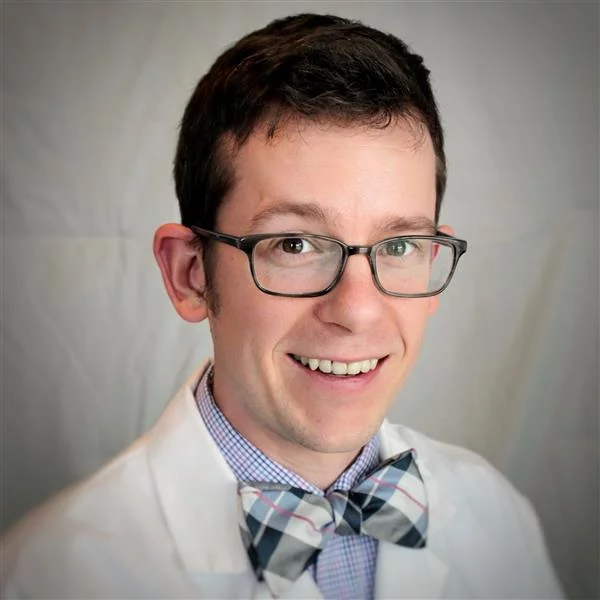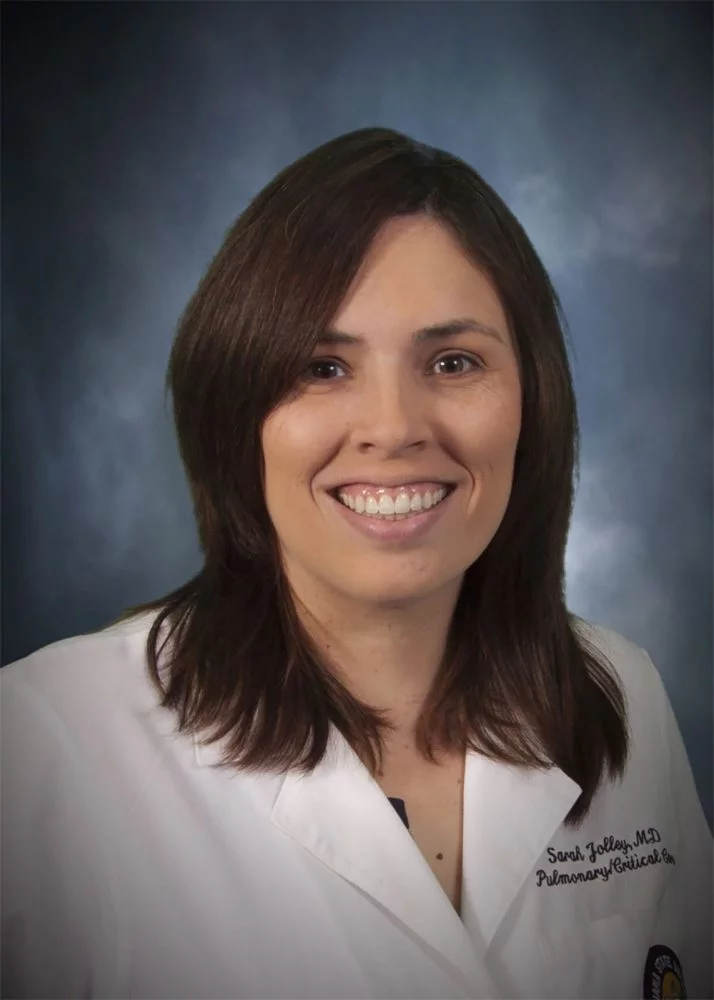
Clarence Troutman woke in late April to find a line plunging into his arm, a tube plugged into his throat, and, looming beside him, a woman wearing what sure seemed like a spacesuit. The astronaut asked if he knew where he was.
“No,” he said, or tried to say. He shook his head as a backup – or tried to shake his head.
The astronaut, who was in fact a nurse in full-body personal protective equipment, understood. She explained that Troutman had tested positive for COVID-19 and that he was in an intensive care unit at UCHealth University of Colorado Hospital on the Anschutz Medical Campus, where he had spent the better part of a month.
Troutman, who would soon turn 60, had survived. But he had a long way to go. Fortunately, he wouldn’t be going it alone. A combination of long-established inpatient post-ICU rehabilitation and a newly formed outpatient service would combine to help him recover from an entirely new illness: COVID-19. Experts at UCHealth and around the world now recognize that many patients – “long-haulers,” as these COVID-19 survivors have come to be known – deal with the aftermath of the coronavirus weeks or months after testing negative. These patients need help.
Troutman would be among them, but not yet. Soon after waking he lifted his gaze to find photos of his wife Angela, his grown son Jason, and his grandson and granddaughter. Nurses had taped them on walls where he could see them whenever it might be that he opened his eyes again. Troutman’s second conscious act was to cry for a solid 20 minutes.
Before and after: A new illness and help for COVID-19 ‘long-haulers’
The name of Troutman’s employer had changed from US West to Qwest to CenturyLink during the 37 years he had worked there. His focus as a technician had changed from phone lines to broadband connectivity. This was physically-active work and, as he put it, “For a 59-year-old, I was in pretty darn good shape.” He had put in time enough to retire, but he liked going out to customers, solving problems, and hooking them up.
In March, he had been working a lot of overtime and, toward the end of that month, had started feeling sick.
“I thought it was maybe a bad cold or the flu,” Troutman said. “It obviously ended up being a lot more than that.”
By late April, three weeks on a ventilator had eroded 31 pounds from his frame. His hands had curled up and gone dormant. He could scarcely speak; he couldn’t walk; he couldn’t feed himself.

Troutman’s rehabilitation started before he left the ICU, where physical therapists and nurses teamed up to help him sit up in bed. Shannon Johnson Bortolotto, a critical care clinical nurse specialist and supervisor, explained why.
“We are not meant to survive lying in bed, and the sooner we can get patients moving, the better,” she said.
Displaying those photos of Troutman’s family had been an equally deliberate act, she added. Whether it’s in-person – not possible during the pandemic – or through FaceTime or printed photos stuck to a wall, “the more we can bring their lives into their hospital room, the better off they are,” Bortolotto said. “What do they do? What do they love? What keeps them alive? Music? Colors? A pet? Family members? We break barriers all the time getting their lives back to them. That’s what’s going to pull them through.”
People recovering from COVID-19, including ‘long-haulers,’ flood hospital rehabilitation unit
Troutman moved on to the UCHealth Rehabilitation Unit at University of Colorado Hospital in early May. At that point, the cascade of COVID-19 patients coming off ventilators far outstripped the unit’s typical 12-bed capacity. As many as 50 patients filled the ever-growing rehab unit’s beds, with three or four additional patients being added each day, says Dr. William Niehaus, the University of Colorado School of Medicine physical medicine and rehabilitation specialist who helped open the COVID rehab unit. Expanding so quickly was akin to “kind of building the airplane as we flew it,” Niehaus said.

Then came a welcome surprise. COVID-19 patients who had been on ventilators were recovering well. Based on how sick and how immobile they were when they arrived, these patients were expected to stay in the rehabilitation unit for 16 days. Niehaus and colleagues soon found that patients who had been short of breath from the exertion of merely sitting up in bed when they arrived at the unit were able to walk the hallways three to five days later. Ultimately, the average COVID-19-patient length of stay under his watch turned out to be more like 10 days.
Why these patients recovered so much faster isn’t clear. But Niehaus suspects that work done in the ICU and in the rehab unit to strengthen the lungs and heart helped set patients up for a quick rebound once their skeletal muscles – also a focus of inpatient rehab – started firing again.
Troutman enjoyed no such rapid rebound. He stayed in the rehabilitation unit 16 days. On June 1, he walked out of the hospital with help from a walker and oxygen from a tank his wife pulled along behind them. Not long ago, his next appointment might have been with a primary care physician who had scant experience with patients who had survived the ICU. A new program led by Dr. Sarah Jolley is changing that.
A clinic tailored to COVID-19 ‘long-haulers:’ patients whose symptoms linger more than a month after initial recovery

Jolley, a pulmonary and critical care medicine specialist with the CU School of Medicine, was establishing an outpatient program for ICU survivors before the pandemic struck. The wave of COVID-19 patients emerging from the ICU showed her efforts to have been prescient.
“Long-hauler” has become an umbrella term for COVID-19 patients with symptoms lingering more than a month after initial recovery. Roughly half of the 60 former COVID patients Jolley’s Post-COVID ICU Clinic had served as of early October never progressed to the ICU – they’re COVID long-haulers. The vast majority of COVID-19 ICU patients are long-haulers. But then, ICU survivors are almost always long-haulers in some respect.
Among post-ICU challenges include physical weakness, cognitive problems, and emotional challenges collectively called PICS (post-intensive care syndrome). In Troutman’s case, a man who for years spent much of his day moving fast found himself shuffling behind a walker with an oxygen canister in tow. While he felt fine cognitively and, in general, emotionally, he did have the occasional sleepless night and found himself awakened from a nightmare more frequently than before the illness (often, these have been work-related, he says: an angry customer, a broken-down truck…). He has been recalling the strange dreams of his weeks medically sedated, in which he lived the life of his father back in Ohio. His father died in 1988.

A new approach to help those recovering from COVID-19
The Post-COVID ICU Clinic brings together specialists in pulmonology, cardiology, pulmonary rehabilitation, physical and occupational therapy, and behavioral health to work with patients like Troutman. It doesn’t happen in one clinic room; in fact, it’s been happening largely through telehealth. That may well be a blessing in disguise, Jolley says.
“It seems to be more convenient for ICU survivors,” she said. “Transportation can be hard, and the actual act of coming back to the hospital can be traumatic.”
Dr. Thida Thant, a CU School of Medicine psychiatrist, leads the Psychiatry Consultation for the Medically Complex service (PCMC) that’s housed in the UCHealth Outpatient Psychiatric Clinic. She’s also leading the Post-COVID ICU Clinic’s behavioral-health efforts.

How does an ICU stay affect behavioral health? Medications that enable intubation can cause confusion, delirium, and cognitive deterioration. The human brain does not appreciate being shut down for weeks at a time, and the isolation can bring anxiety, depression and post-traumatic stress disorder (PTSD) in the wake of that experience.
Thant’s team starts with an evaluation and cognitive screening to pick up problems the patient might not have reported. They can prescribe medications for depression, anxiety, and sleep problems. They determine if the family needs support, if the caregiver’s burned out, and if the patient might benefit from cognitive behavioral therapy, coping mechanisms, or relaxation skills.
“There’s a comprehensive toolkit we’re able to apply,” Thant said. “Even though COVID is a new thing, a lot of psychiatric struggles are seen in many chronic illnesses.”
One difference, she says, is the omnipresence of COVID-19 in the news. Troutman says that has an impact.
“This morning I had a little episode where I just thought about the whole thing,” he said. “So much of what’s going on in the news now – COVID this, COVID that – and it really kind of brought back some memories.”
Stronger every day
Troutman has worked with physical and occupational therapists also. For a few weeks after his return, a physical therapist visited him at home to work on his strength and endurance – up and down the stairs, lifting weights with light dumbbells, and the like. An occupational therapist helped him get back to taking care of himself and worked with him on his shoulders’ range of motion, which lying on his stomach during intubation had stiffened.

CU School of Medicine cardiologist Dr. Natasha Altman, also involved with the Post-COVID ICU Clinic team, has yet to scan Troutman’s heart, but given concerns about myocarditis and possible long-term effects, that could be in the cards. During his first telehealth meeting with Jolley, she showed him a CT scan of his chest in which lung scarring “looked like a bunch of spider-web cracks,” as he put it. Jolley suggested that he take part in the pulmonary rehabilitation program at University of Colorado Hospital.
Two months later, Troutman was still doing pulmonary rehab twice a week. Alexandra Worl, Pulmonary Rehabilitation program coordinator at University of Colorado Hospital, says that when he started, he couldn’t walk for six minutes on a treadmill even with supplemental oxygen. By early October, he was ripping through 30-minute high-intensity interval training sessions on the upright stepper without oxygen.
Troutman’s still far from full-strength. He’s on disability benefits through the end of the year. He would like to be back to work after that – though he’s hoping for a job where he’s not quite so out-and-about.
The number of COVID-19 patients entering Jolley’s new clinic from the ICU via Niehaus’s rehabilitation unit is sharply down, and the rehabilitation unit is back to its old 12-bed self. But the SARS-CoV-2 virus continues to bring COVID-19 long-haulers into the new clinic’s fold. When the pandemic subsides, that flow also will slow to a trickle and finally cease. Then the post-ICU outpatient care Jolley envisioned before the coronavirus can focus on the variety of patients who land in the ICU for all sorts of reasons. And they’ll be better off for it, too.